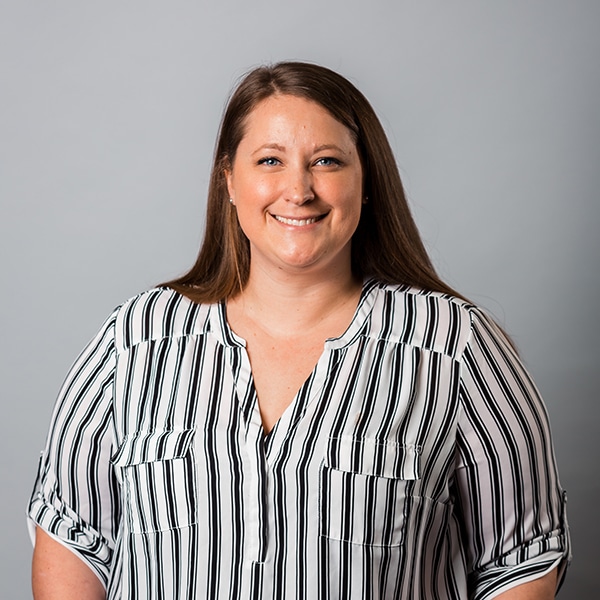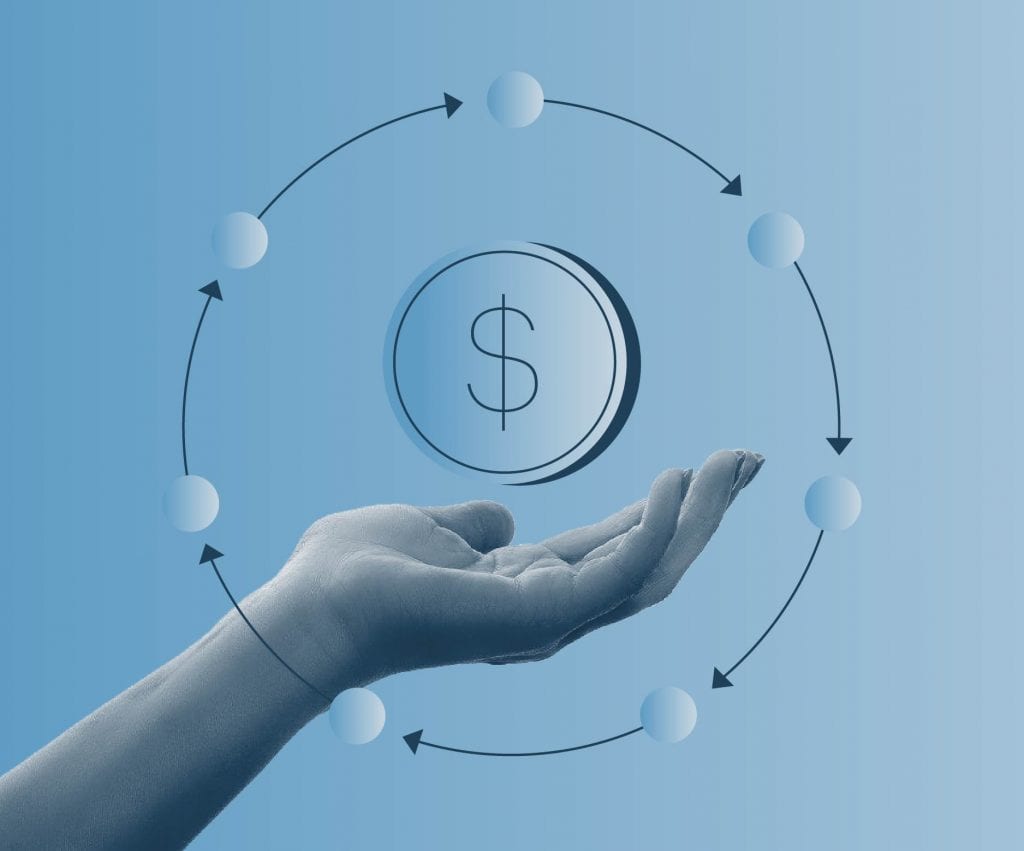If you have a deal with a distributor or client but don’t have the cash flow to fulfill it, securing purchase order (PO) financing for your small business ensures you won’t lose the sale.
The process is easy, but it isn’t for everyone. Let’s go over how purchase order financing works with examples, rates, qualifications and more. Then, you’ll be able to decide whether this is the right solution and reach out to purchase order financing lenders to get started.
Purchase Order Financing: How it Works
Simply put, purchase order financing works by getting you the capital you need to fulfill customer orders.
Turning down a sale because you lack the cash flow to fulfill it cuts into revenue and sours relationships with clients, which can hurt your ability to scale in the future. Purchase order financing helps you avoid that.
If you don’t have the money to pay your supplier, you get a lender to do it for you. In exchange, you repay the lender what they gave the supplier, with interest and fees.
How does PO financing work? Let’s go through the 7 steps in the purchase order financing cycle.
The 7 Steps of the Purchase Order Financing Process
Step 1: Get a Quote From Your Supplier
Once you receive an order from a customer, you need to find out how much it will cost to fulfill it. Go to your suppliers and ask them to generate a quote based on the quantity your customer needs. This will include prices for raw materials, labor and more.
If the quote is currently unaffordable, you’ll want to apply for purchase order loans.
Step 2: Apply with Purchase Order Financing Companies
After you find the best purchase order financing company (or companies) for your needs you can start your application.
If approved, your lender could finance up to 100% of the total you need to pay the supplier. However, it’s more common that the purchase order financing terms will require you to contribute some of your own money to help reduce the risk.
Step 3: The Lender Pays Your Supplier
When your purchase order loan is approved, the lender will pay your supplier. At this time, you’ll have to contribute any financing amount that the lender didn’t include.
Once they receive the payment, your supplier will begin working on fulfilling the order.
Although purchase order financing rates are generally affordable, they add up the longer it takes your customer to pay.
Step 4: Your Customer Receives the Product
When the work is completed, the supplier will send the products directly to the customer.
Step 5: Invoice the Customer
Once the order is filled, you’ll send the invoice over to your customer. Make sure to stay in touch with customers to avoid late payments that affect your cash flow and costs of borrowing.
Step 6: The Customer Pays the Lender
In the case of purchase order financing, the customer pays the lender—not you. Make sure to take into account that, although purchase order loan rates generally are affordable, they add up if it takes customers a longer time to pay.
Step 7: Get Paid
The final step of the process is the best one for you: getting paid.
The lender will deduct the full amount that they initially funded through PO financing, along with any fees that accrued while they waited to receive payment.
Purchase Order Financing Rates
Most PO financing companies charge rates and fees based on the amount of time it takes your customers to pay them. Some charge more and less than others, but rates are generally between 1%-6% for the first 30-60 days.
After that, lenders will charge you more often as they wait. Instead of every month, you’ll usually be charged every 10 days or so. If it comes to this, the rate will fall lower than what you were charged for the first month, between 1%-3%. Still, it’ll cost more in the long run if your customers don’t pay promptly.
The rate you receive and the ultimate cost of borrowing don’t have much to do with you as a business. Initial rates are based on the reputation of your supplier and the creditworthiness of your customers, because they’ll be producing the product and paying the lender.
Working with a reliable, fast supplier will make it easier to secure affordable purchase order funding. Likewise, if your customer is a risk (not paying the lender back), it’ll have the opposite effect and cause your total cost of borrowing to increase.
Purchase Order Financing Example
Let’s take a look at an example of how purchase order financing rates affect your cost of borrowing.
Total amount: $100,000
Interest rate: 3% for the first 30 days; 1.5% every 10 days after that
Fees: Will vary based upon the complexity of the transaction
Repayment limit: Up to 90 days
In this scenario, you’ll owe $3,000 to the lender if your customer pays within 30 days. You’ll pay $1,500 more every 10 days after.
Here’s a look at how your customer can inflate your total costs.
40 days: $4,500
50 days: $6,000
60 days: $7,500
70 days: $9,000
80 days: $10,500
90 days: $12,000
Your costs rise sharply after the first 30-day window closes. This makes it very important to ensure your customers pay their invoices on time.
Purchase Order Financing Terms
Purchase order financing lenders will determine the respective funding amounts, repayment lengths and other pertinent details.
Loan Amounts
The total amount you can secure could start at $15,000. Most lenders won’t offer financing for orders with smaller price tags to minimize risk.
For large orders that require producing a higher quantity or quality of inventory, purchase order financing can max out around $25 million.
Repayment Lengths
Purchase order financing lenders will cap the length of time it takes between the time they pay the supplier and the time they need to be paid.
Most will set this cap at 90 days, but a few allow only 60 days. This could get dicey if your suppliers aren’t quick to ship and customers aren’t quick to pay.
Small business tip:
You may be on the hook if your lender isn’t paid by the time the term length is up on your PO financing. Make sure to vet your suppliers well to make sure they can quickly produce and ship your products. When they do, stay on top of your customers so they don’t drag their feet when paying the lender.
Speed of Funding
The time it takes to receive funding is boiler plate with PO financing lenders.
For domestic transactions you can expect to get your money within 2 weeks. If you’re conducting business internationally, it could take up to a month.
If you need money immediately, check out one of the many fast business loan options available through online lending marketplaces.
Get Your Business Loan Faster
Purchase Order Financing Qualifications
Since the creditworthiness of your supplier and customer are more heavily taken into account than your own, it’s easier to qualify for PO financing than many alternatives.
Still, you’ll need to hit certain criteria to be considered:
- Type of Business: Business-to-business (B2B) or business-to-government (B2G)
- Type of Product: Tangible goods for both direct use and resale
- Profit Margins: Varies by lender, but will generally fall between 15%-25%
- Credit: Based on supplier and customer, but both have to be positive to receive funding.
Purchase Order Financing Pros and Cons
Obtaining purchase order financing for your small business comes with many advantages, but there are also some disadvantages that come along with it. Make sure to take them all into account before making your decision.
Pro: Flexibility
Purchase order financing isn’t technically in the “loans” category, which makes it more flexible for you. Instead of paying it back in installments, as with a typical term loan, it’s settled when your customer pays their invoice.
Meanwhile, you can use any incoming cash flow to put back into your business instead of sending it to your lender.
Con: Less Control
It might seem like a good idea to allow others to facilitate much of the process, but that’s not always the case.
Since the supplier ships your product directly to the customer, some elements may slip through the cracks. Without your involvement, you won’t be able to do quality control and ensure your customer is happy with the shipment.
Also, having the customer pay the lender might cause some confusion. Your customers might not understand the process and attempt to pay you directly, or they could become concerned when they realize you had to take out funding to fill their order.
Pro: Easy to Qualify
Since your lender is more concerned about the creditworthiness of your supplier and customer, it makes it easier for you to qualify.
You can obtain purchase order financing for startups (which typically don’t have access to many financing options) or businesses with less than stellar credit. Having trustworthy customers and suppliers will help boost your chances and control costs.
Con: Potentially High Costs
On the surface, that initial 1%-6% interest rate doesn’t look bad for the first month. After all, it’s lower than what most alternative business loans offer.
However, those costs can skyrocket if your customer doesn’t pay quickly. An initial 3% interest rate can jump to a total of 12% after 90 days. If your customer doesn’t pay by the time the window is up, you could be held liable if the financing goes into default.
Purchase Order Financing Is Best for Whom?
PO financing can be a great option for any product-driven B2B or B2G business, but there are a few cases that make it especially appealing.
Businesses With Seasonal Spikes
Have a product that sells like hotcakes during the holiday season or another period? You might not have the working capital to fulfill these large orders due to slower sales from the rest of the year.
Purchase order financing lenders can help you get the money you need without taking out more expensive loans.
Rapidly Expanding Businesses
It’s a dream for many entrepreneurs: Your startup has taken off and you just received a huge order. The problem: Most startups and businesses in early stages of growth don’t have the cash to pay suppliers.
Since your creditworthiness isn’t as important to purchase order financing companies as others in the process are, it’s a better option for young businesses.
Businesses with Tight Cash Flow
Small businesses experience times where working capital is tight. If you get an order that can generate a lot of revenue during these times, it wouldn’t be economical to turn it down.
Although you won’t bring in as much revenue as you would if you didn’t need to pay a lender, it’s still better than the other options: $0.
What if My Customer Has Already Been Invoiced?
Purchase order financing is sometimes confused with invoice financing (also known as accounts receivable or AR financing), but the 2 are built for different circumstances.
While you’d use PO financing if you can’t afford to fulfill an order, invoice financing is used after the customer has received their product or service.
With invoice financing, the lender gives you up to 80% of what your customer owes you and you pay fees until your customer pays their balance. This is a great option for businesses that lack working capital while they wait between customer payments.
Finding the Best Purchase Order Financing Lenders
Purchase order financing companies have very similar rates and terms. Choosing the one that’s right for you will take some vetting.
Take the following into consideration:
- Dedicated PO financing company
- Experience in your industry
- Level of credit checks on you/the supplier/the customer (hard or soft inquiries for each)
- Do they pay suppliers with a letter of credit or cash? Before or after the customer pays?
- How do they receive payment from your customers?
- Do they communicate directly with your customers?
- What are their typical fees?
Once you have a good idea of whether the lender is right for you, it’s time to make a decision.
Then, you can get a quote from a supplier and begin the application process.






